
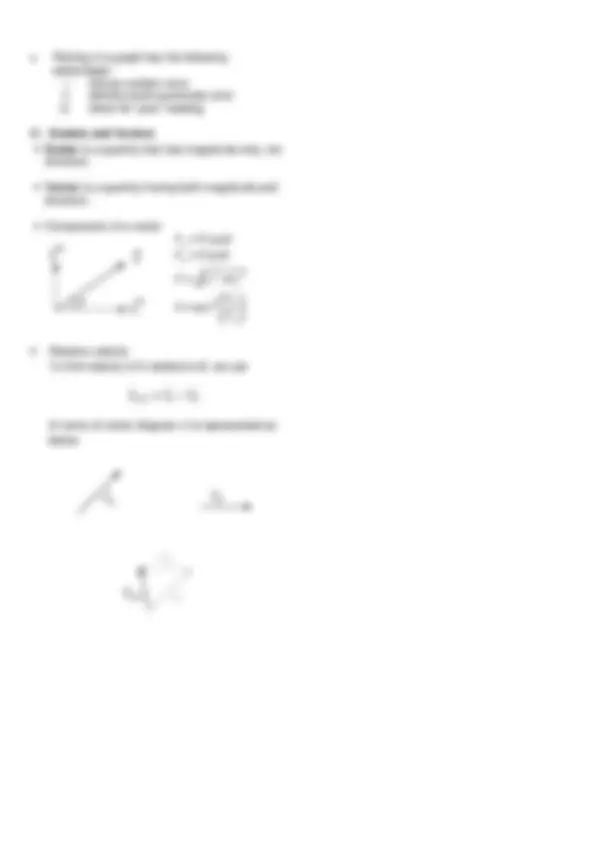
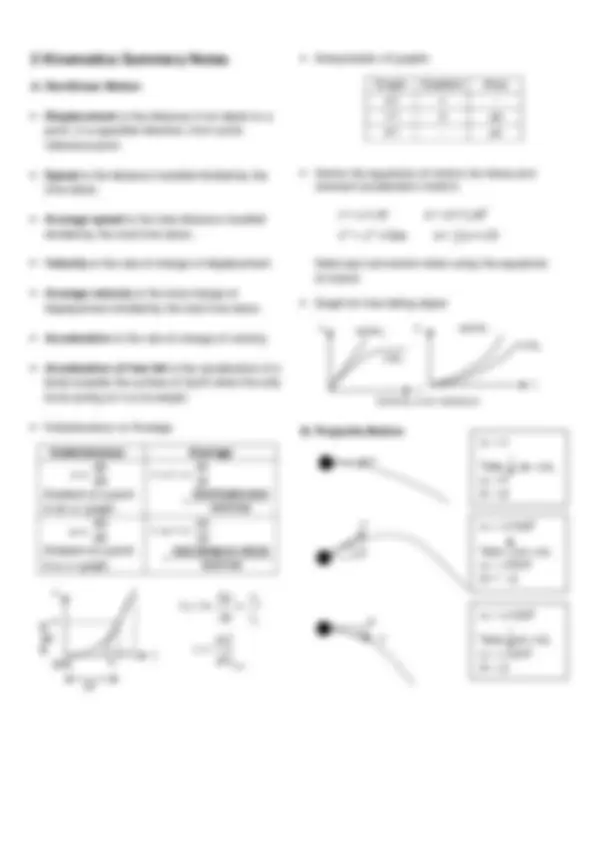
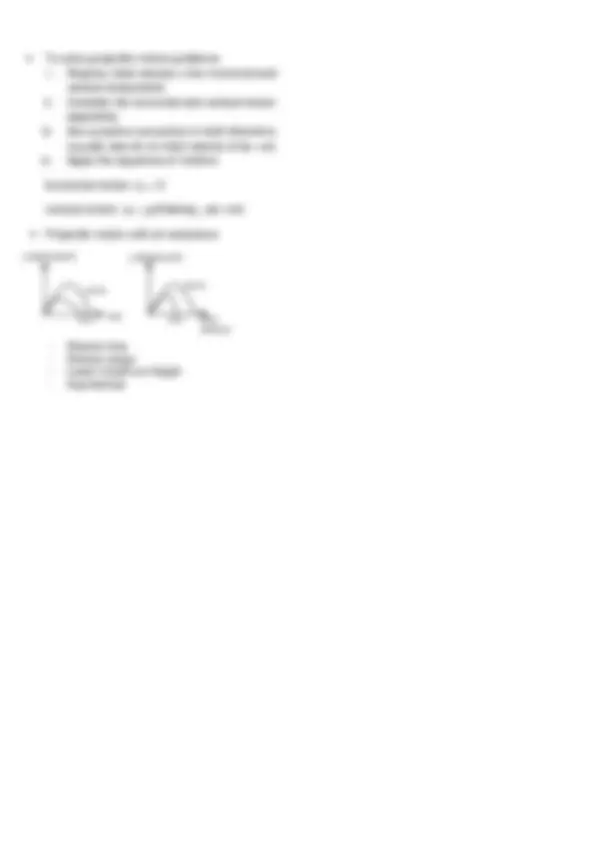
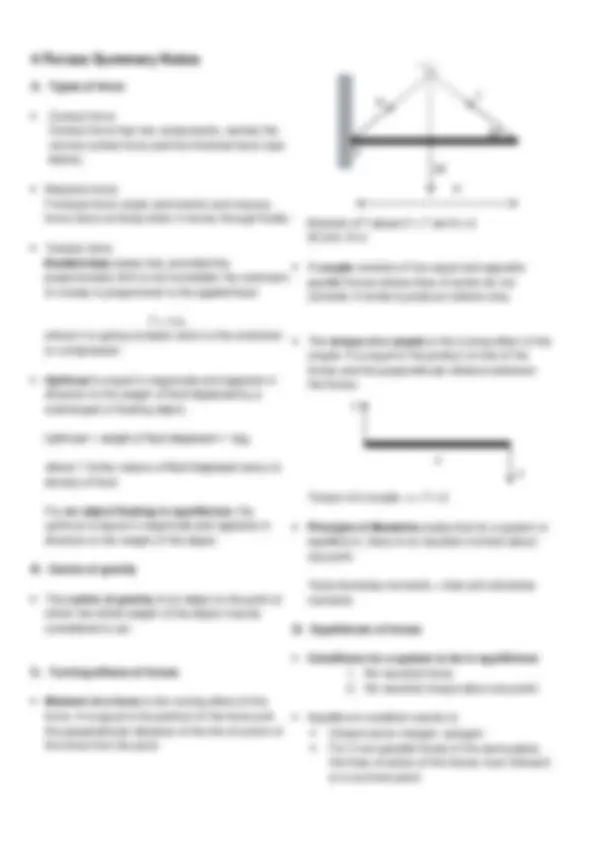
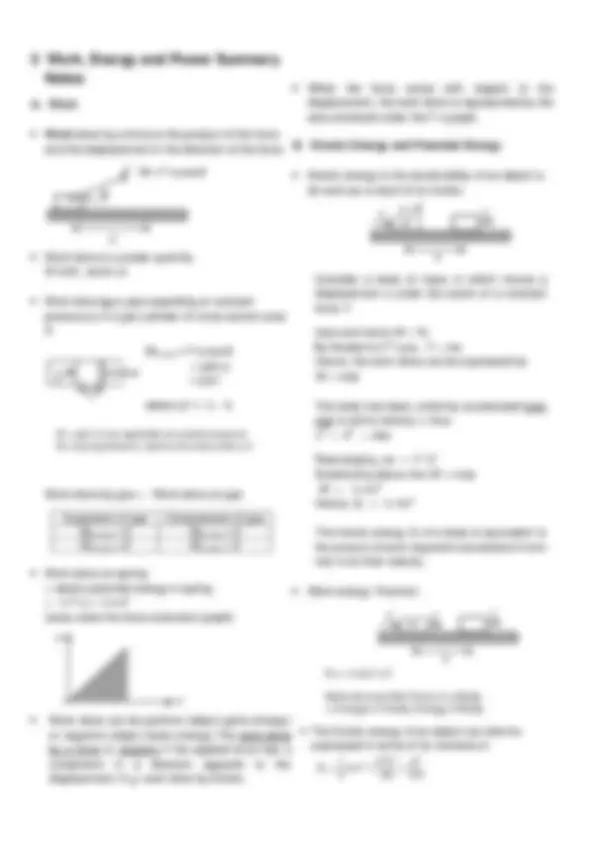
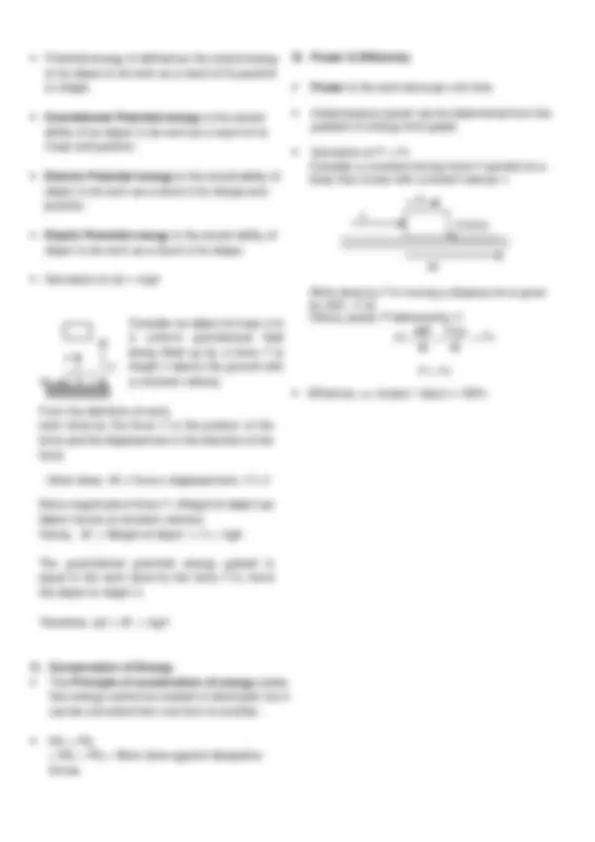

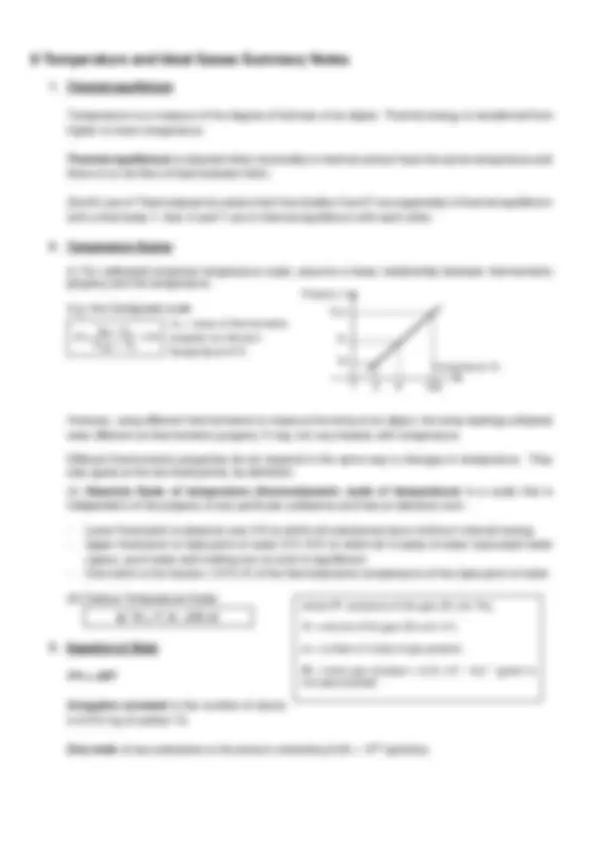
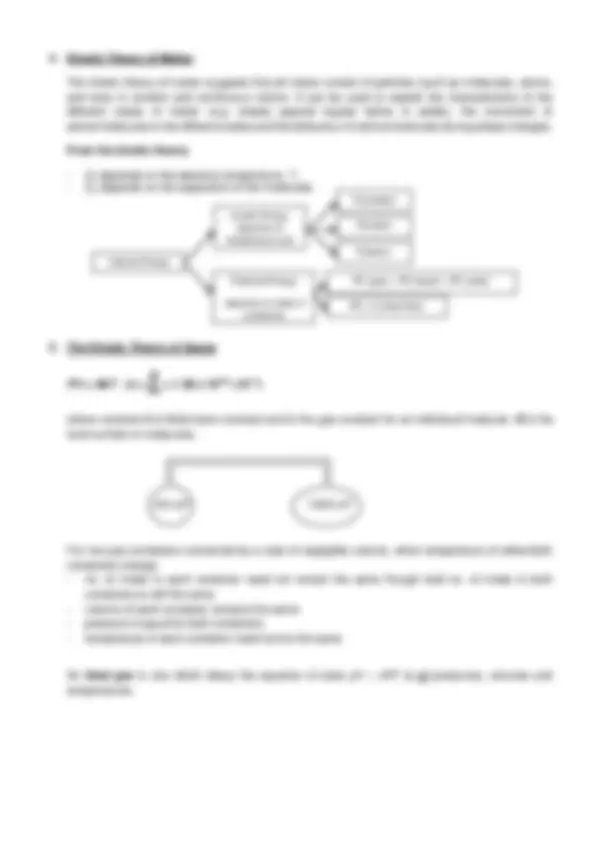
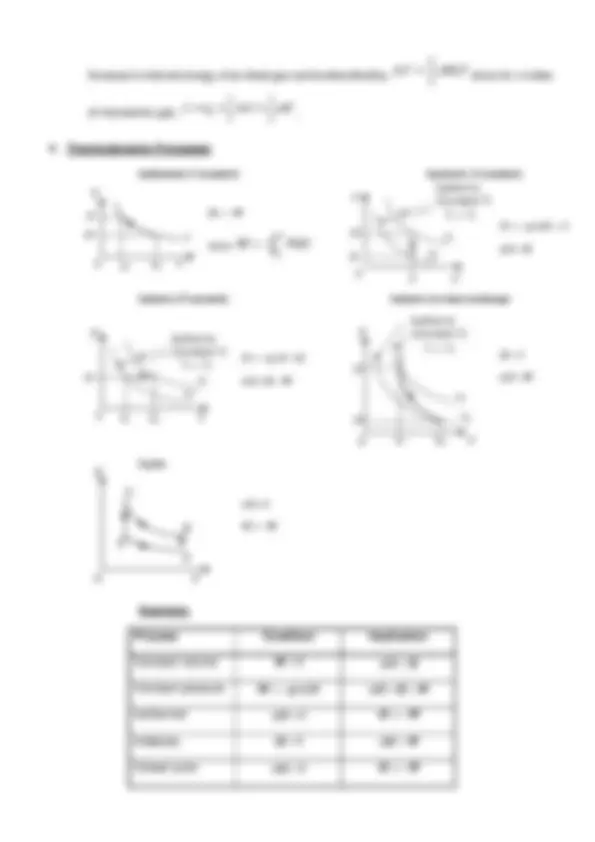
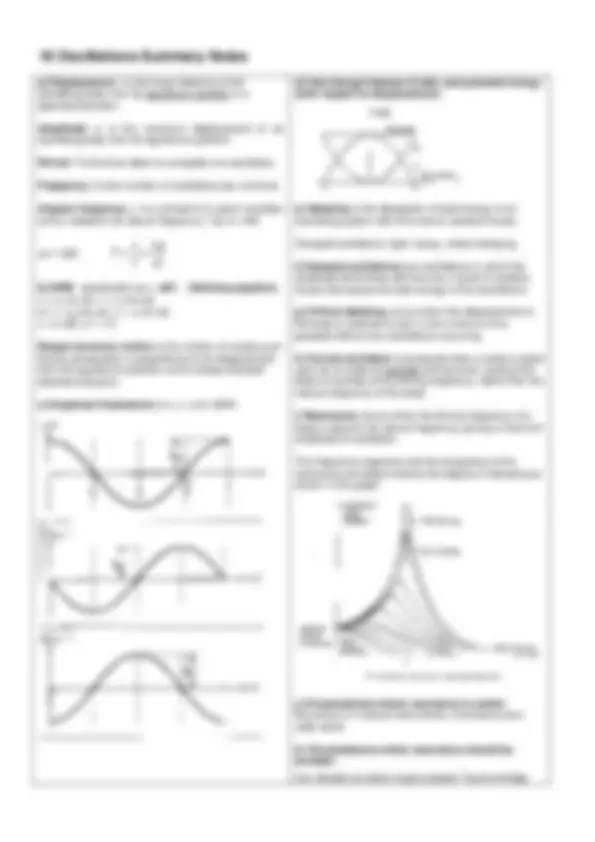

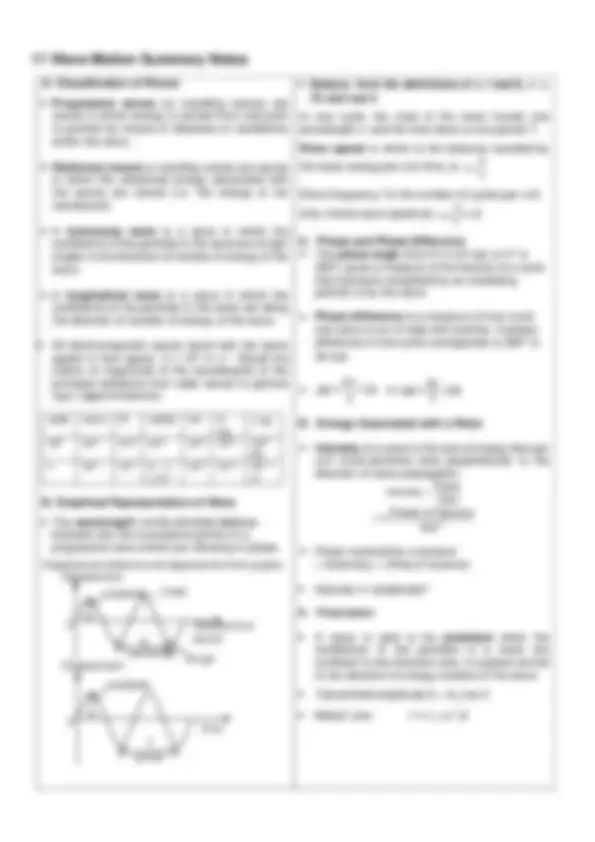

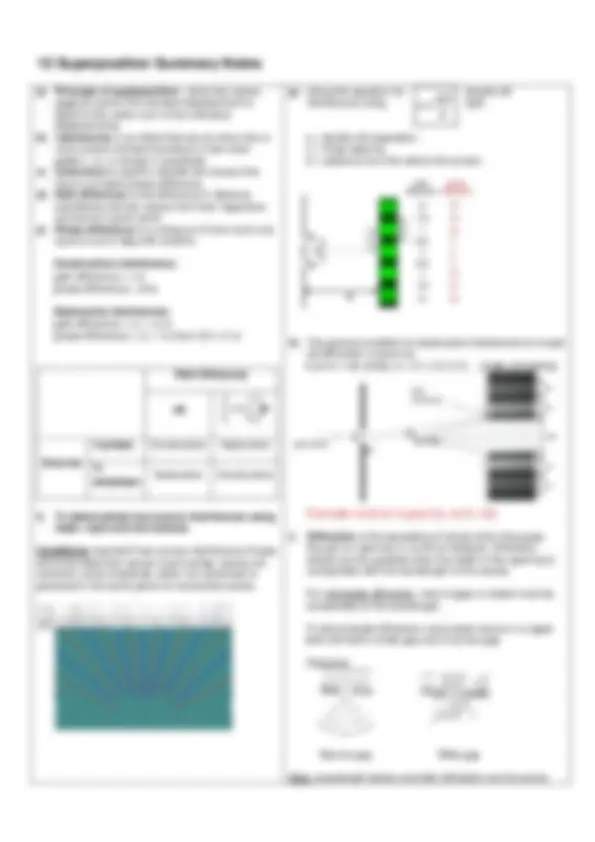
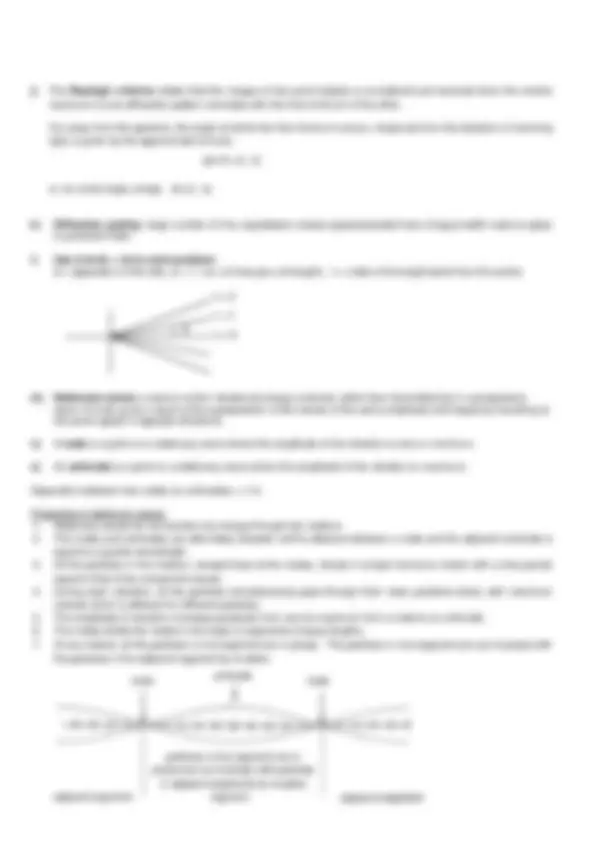
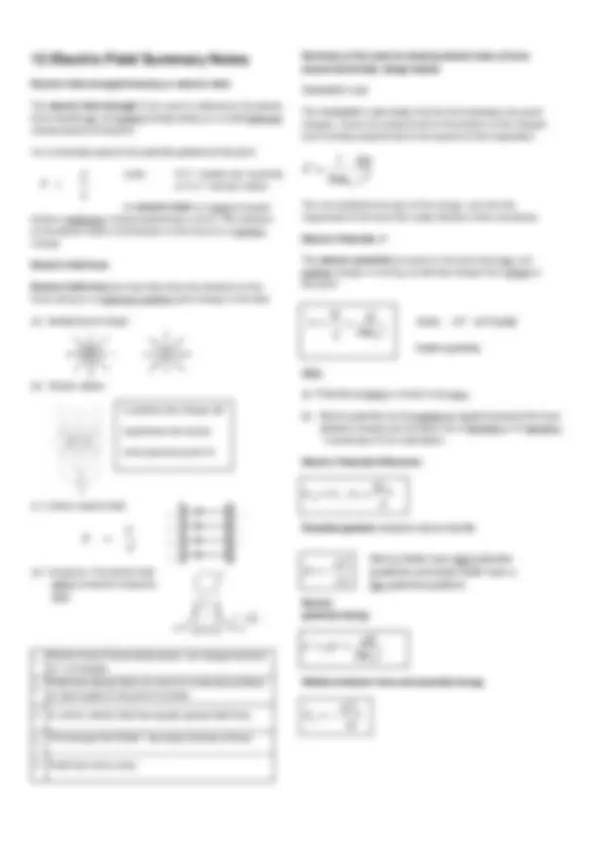
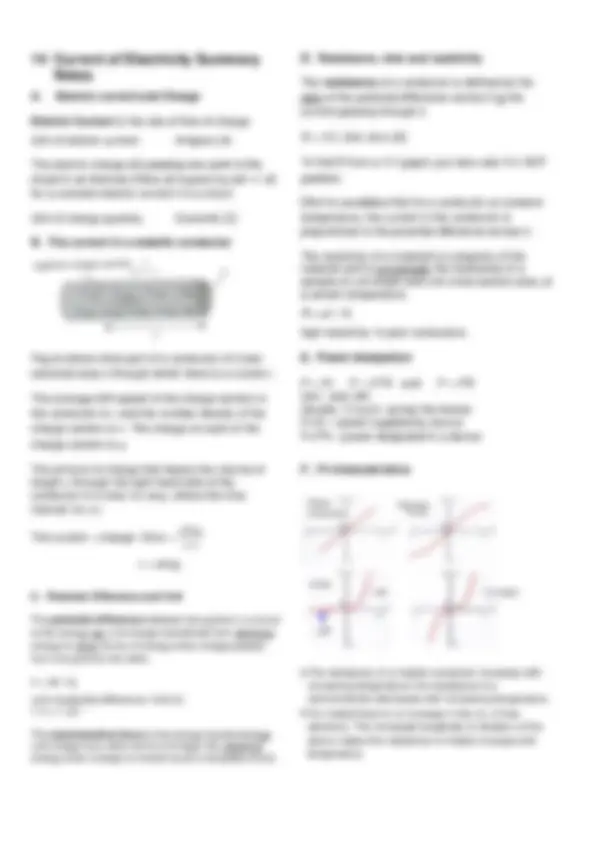
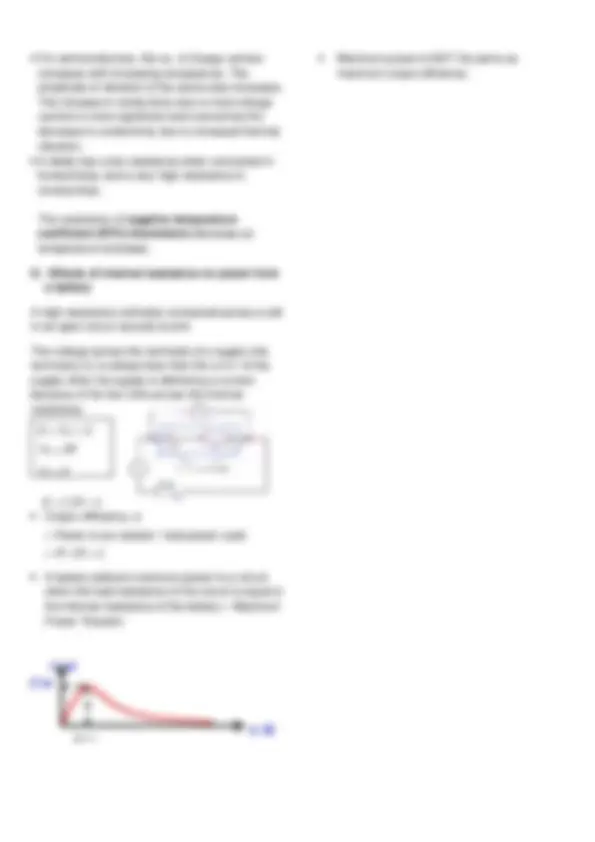
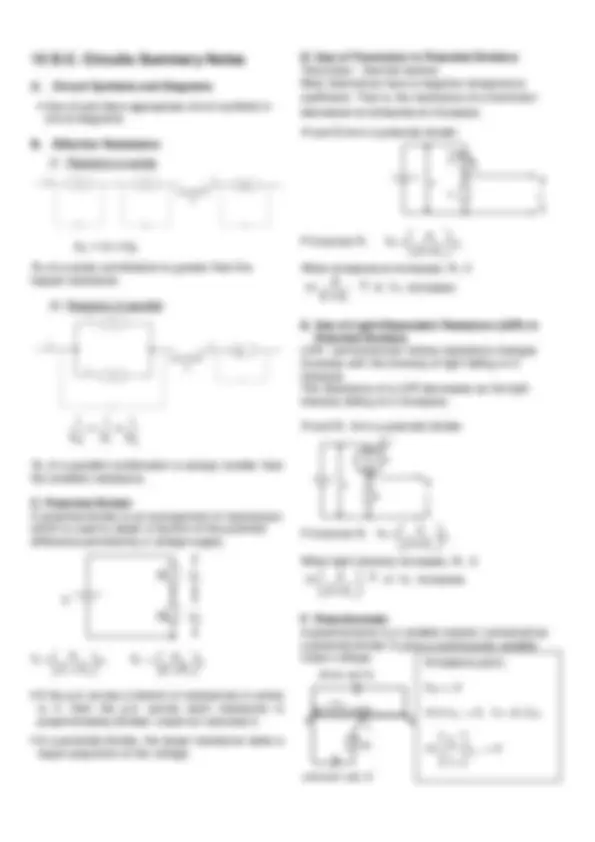
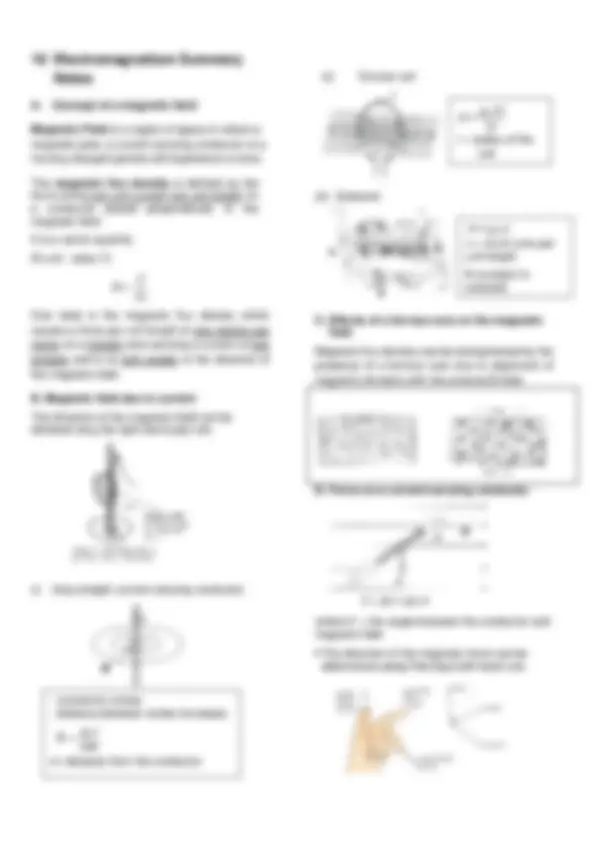
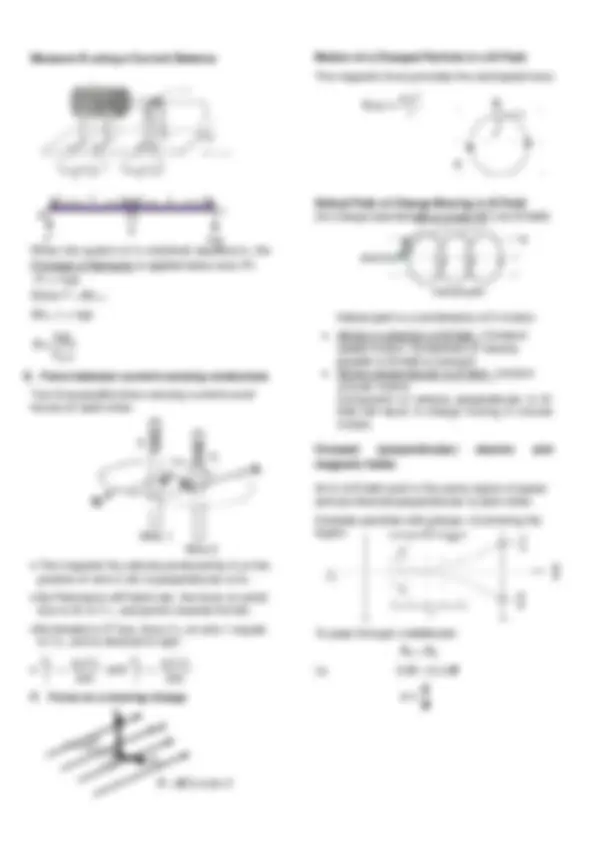
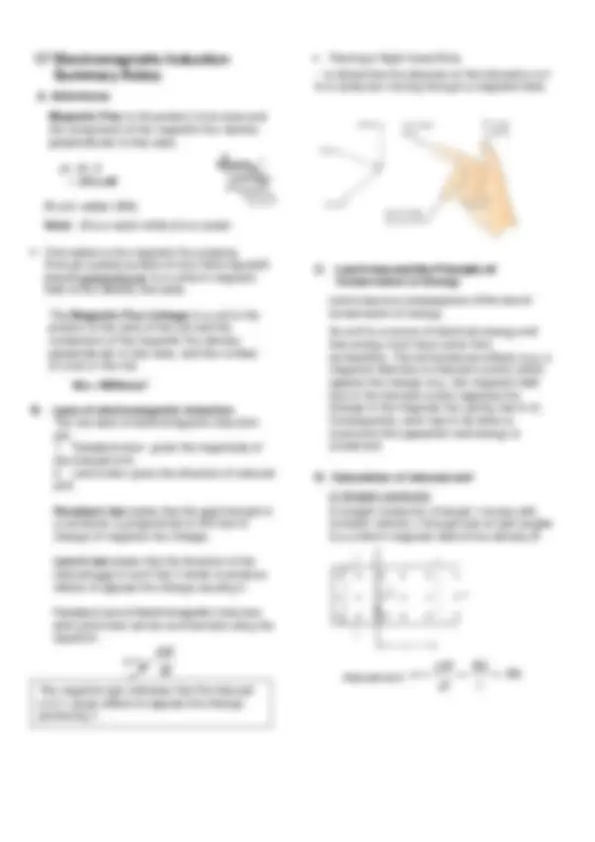
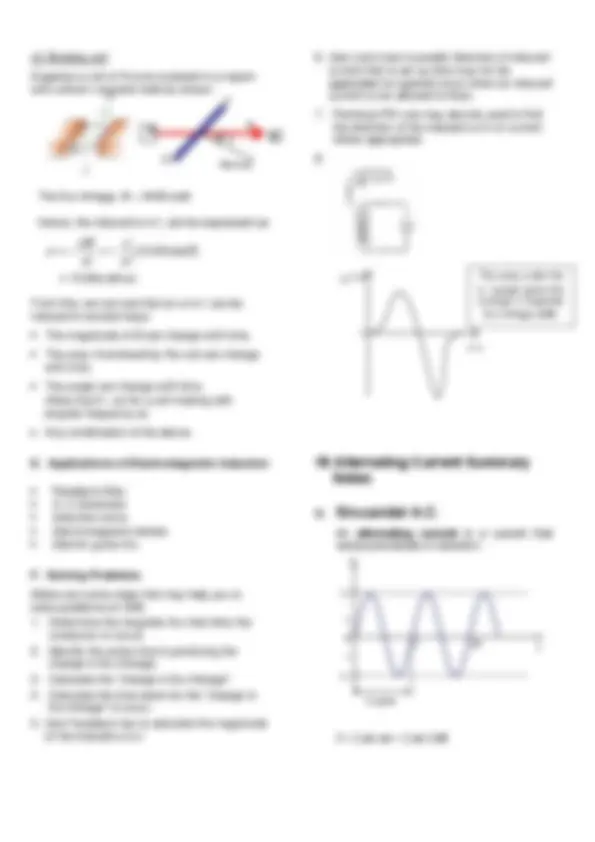
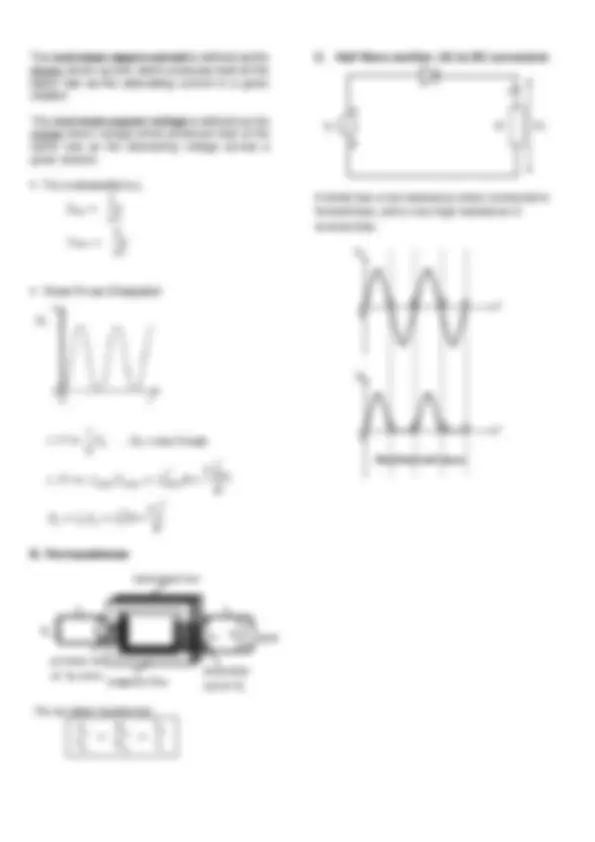
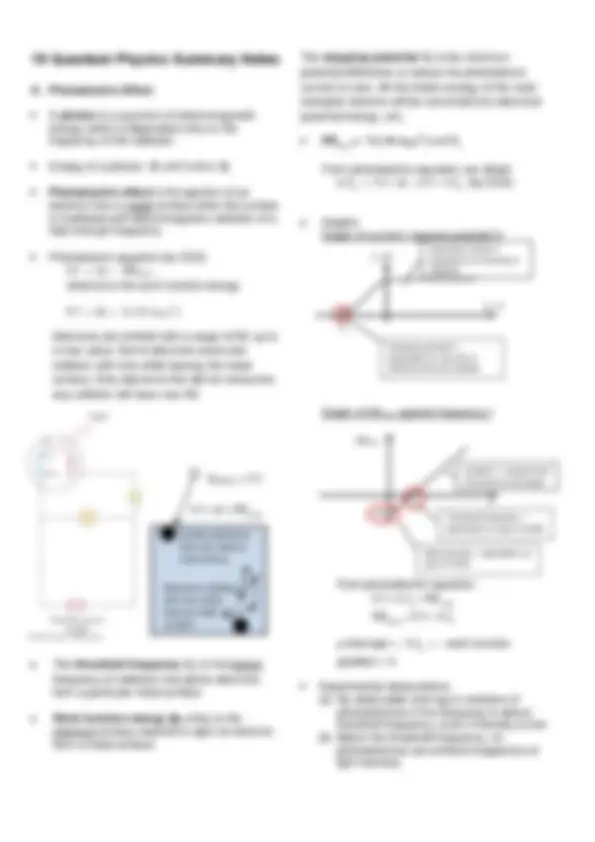
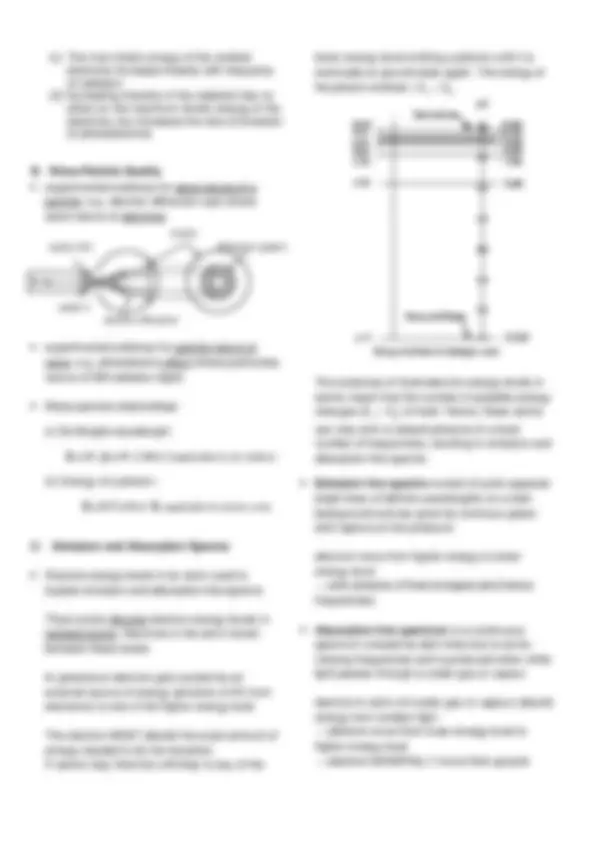
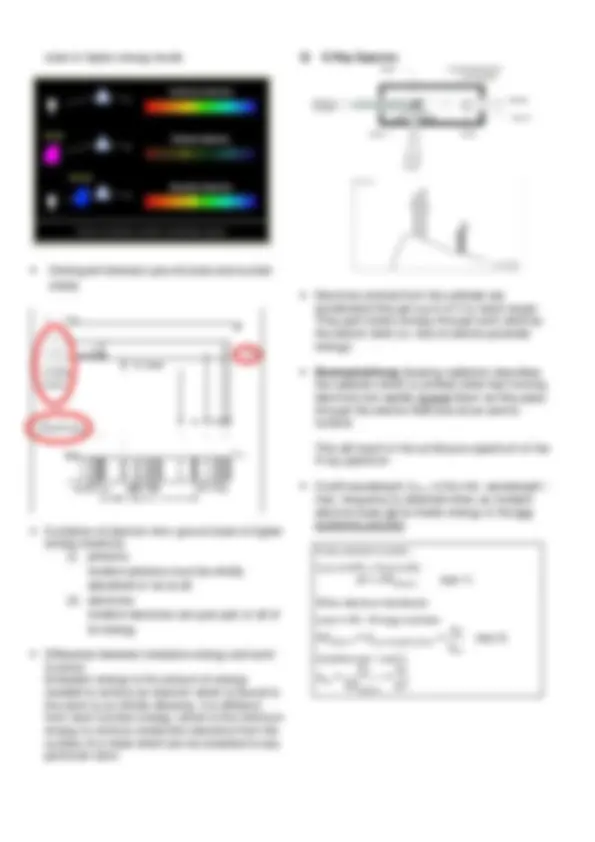
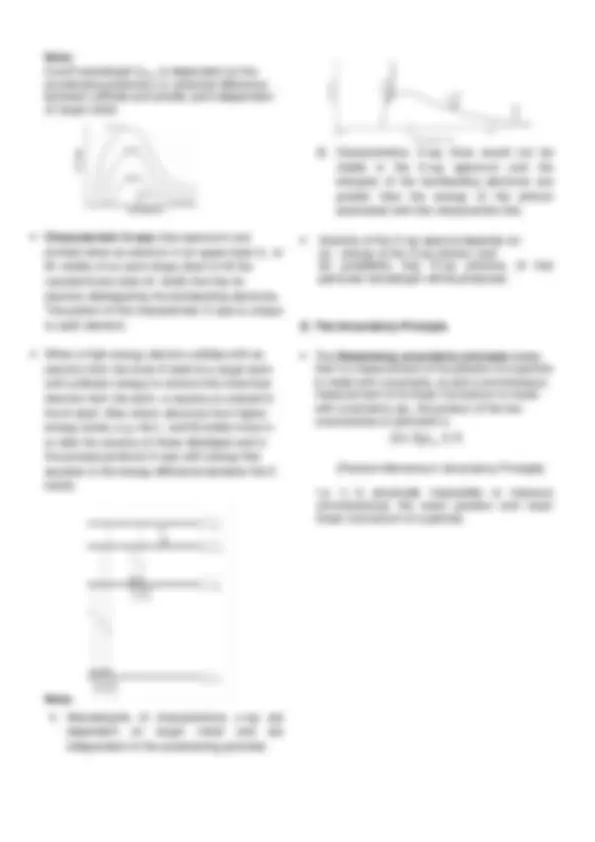
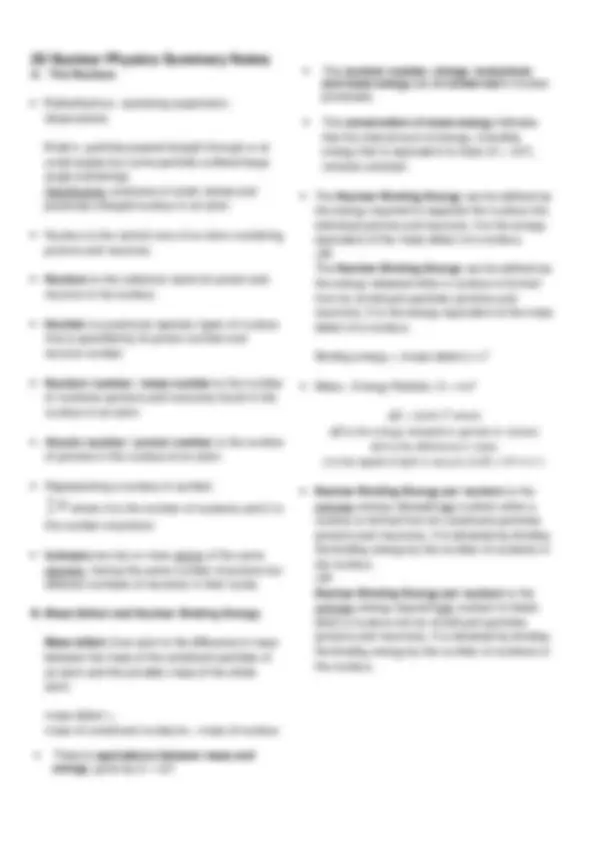
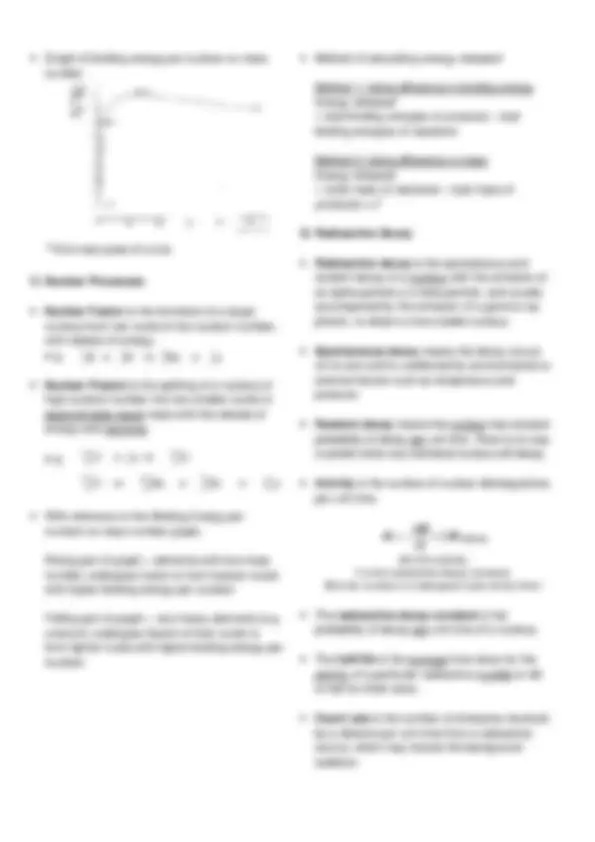
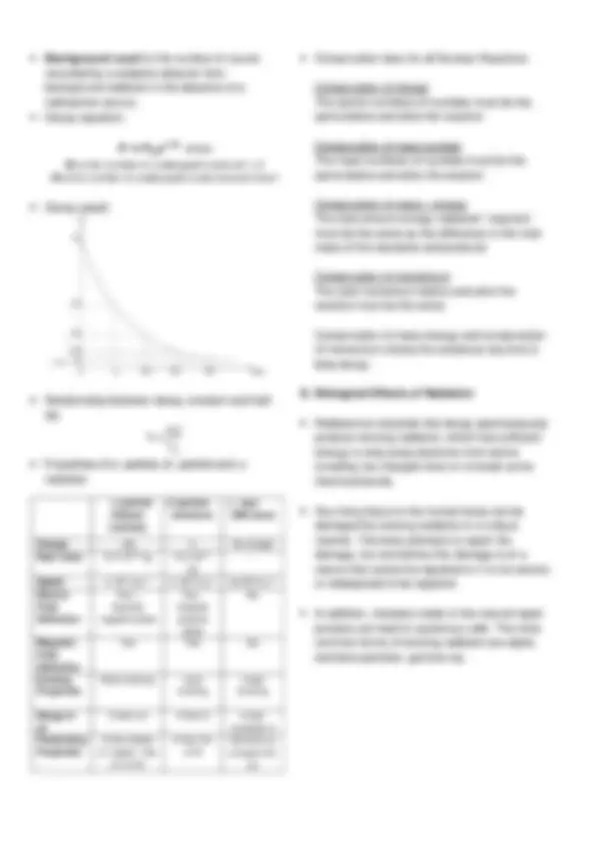


Study with the several resources on Docsity

Earn points by helping other students or get them with a premium plan


Prepare for your exams
Study with the several resources on Docsity

Earn points to download
Earn points by helping other students or get them with a premium plan
Community
Ask the community for help and clear up your study doubts
Discover the best universities in your country according to Docsity users
Free resources
Download our free guides on studying techniques, anxiety management strategies, and thesis advice from Docsity tutors
ASRJC H2 Physics Summary Notes 2023 (UNISA)
Typology: Lecture notes
1 / 40

This page cannot be seen from the preview
Don't miss anything!

































The Summary Notes compiles key concepts, definitions, equations and applications, and is meant as a summary to aid your revision. This does not replace lecture notes, which you should read for detailed
explanations. You should also make your own notes / annotations to highlight key learning points which
you have learnt to help you reinforce your understanding of the concepts.
Important terms in the syllabus are in bold font – their definitions or meanings can be tested through a
‘recall’ question. Hence, we suggest you memorise all statements containing bold terms and use them to help you understand the concepts contained within.
Name: _______________________________________
Class : _______________________________________
A. Physical Quantities and SI Units
Base Quantity
Base Unit Name Abbrev Length metre m Mass kilogram kg Time second s Electric current ampere A Temperature kelvin K Amt of subst mole mol
Avogadro Constant, NA 1 mol of 12 C is 12g,
1 atom of 12 C is approx 12u.
e A
Rules for working out the units of derived quanitites: i. If 2 or more quantities are added together, they must have the same units. ii. The rules of algebraic multiplication and division apply
pico 10 -^12 p deca 101 da nano 10 -^9 n hecto 102 h micro 10 -^6 kilo 103 k milli 10 -^3 m mega 106 M centi 10 -^2 c giga 109 G deci 10 -^1 d tera 1012 T
B. Errors and Uncertainties
Systematic Error Random Error Constant deviation of readings in 1 dir from the true value
Scatter of readings about mean value
Eliminated by calibration curve and control experiments
Reduced by taking average of repeated readings
Precision Accuracy degree of agreement between means of the same quantity
degree of agreement between experiment value and true value Readings close to mean
Mean close to true value Small random error Small systematic error
ii. If 3
2
then
n – no of mol; N – no of atom m – mass; Mr – molar mass
A. Rectilinear Motion
divided by the total time taken.
displacement divided by the total time taken.
Instantaneous Average
𝒗 =
Gradient at a point in an s-t graph
total displacement total time
𝒂 =
Gradient at a point in a v-t graph
total change in velocity total time
Graph Gradient Area s-t v -
v^2 = u^2 + 2 as s = 12 ( u + v t )
State sign convention when using the equations of motion
B. Projectile Motion
1
1
1
=
s
t (0,0)
s 1
t 1
s
t
w/o Rair
w Rair
v
t
w/o Rair w Rair
s
t where Rair is air resistance
u
u
u
u x = u
Take as +ve, u y = 0 a y = g
Take as +ve,
a y = − g
Take as +ve,
a y = g
horizontal motion: a x = 0
vertical motion: a y = g (if taking ↓ as +ve)
y displacement
w/o Rair
w Rair time
y displacement
w/o Rair
w Rair horiz distance
kinetic energy remains the same. Use
✓ COM ✓ Conservation of Kinetic Energy ✓ Relative speed of approach = Relative speed of separation ➔ u 1 – u 2 = – (v 1 – v 2 ) [Note: must include direction]
kinetic energy is not conserved. Use
✓ COM If objects move together after collision, the collision is definitely inelastic.
BUT if objects do not move off together after collision, the collision MAY be or MAY NOT be elastic, question will have to give other information for a conclusion to be made.
A. Types of force
Frictional force (static and kinetic) and viscous force (force on body when it moves through fluids)
Hooke’s law states that, provided the proportionality limit is not exceeded, the extension of a body is proportional to the applied load.
F = k e, where k is spring constant and e is the extension or compression
Upthrust = weight of fluid displaced = Vρg,
where V is the volume of fluid displaced and ρ is density of fluid.
For an object floating in equilibrium , the upthrust is equal in magnitude and opposite in direction to the weight of the object.
B. Centre of gravity
C. Turning effects of forces
force. It is equal to the product of the force and the perpendicular distance of the line of action of the force from the pivot.
Moment of T about O = T sin θ x d SI Unit: N m
Torque of a couple, τ = F x d
Total clockwise moments = total anti-clockwise moments
D. Equilibrium of forces
θ
d
d
of an object to do work as a result of its position or shape.
ability of an object to do work as a result of its mass and position.
object to do work as a result of its charge and position.
object to do work as a result of its shape.
C. Conservation of Energy
D. Power & Efficiency
h PE =0^ m
Consider an object of mass m in a uniform gravitational field being lifted up by a force F to height h above the ground with a constant velocity.
From the definition of work, work done by the force F is the product of the force and the displacement in the direction of the force
Work done, W = Force x displacement= F x h
Since magnitude of force F = Weight of object (as object moves at constant velocity) Hence, W = Weight of object x h = mg h
The gravitational potential energy gained is equal to the work done by the force F to move the object to height h.
Therefore, U = W = mgh
Consider a constant driving force F exerted on a body that moves with constant velocity v.
Work done by F in moving a distance d x is given by d W = F d x Hence, power P delivered by F , dW d = = dt dt
F x P^ = Fv
P = Fv
1. Kinematics of uniform circular motion
(rad). Arc length s Radius r
displacement.
One radian is the angle subtended at the centre of a circle by an arc equal in length to the radius.
Period T is the time taken by an object to complete one revolution. Frequency F
2. Centripetal acceleration
Uniform circular motion – constant speed, velocity continuously changing Centripetal acceleration a always directed towards centre of circle (perpendicular to velocity)
3. Centripetal force
Centripetal force is the resultant of one or more real forces; not an additional force
No work done by centripetal force since it is perpendicular to displacement.
4. Problem solving technique 1. Identify the object moving in circular motion. 2. Identify all forces acting on the object. 3. Find the resultant force towards the centre of the circular motion. 4. Equate this resultant force to the centripetal force expression.
For vertical circular motion, circular motion is not uniform.
Need to apply conservation of energy K.EA + P.EA = K.EB + P.EB
s = r
( )^22
2
2
2 mr
Definitions
Field of force is a region of space where a body experiences a force.
Gravitational field is a region of space where a mass experiences a force. The direction of the field is the direction of the force on the mass.
Gravitational field strength at a point is the gravitational force exerted per unit mass placed at that point. Newton’s Law of Gravitation states that the mutual force of attraction between any two point masses is proportional to the product of the masses and inversely proportional to the square of their separation.
Weightlessness is the situation when a person experiences free fall and has zero contact force on him.
[Need to elaborate base on the context of the question. For example: Both the satellite and the astronaut are falling freely with the same acceleration (or the gravitational force on the astronaut is just enough to provide the centripetal force for the circular motion), the force the satellite exerts on the astronaut is zero, hence the astronaut experiences weightlessness. (N05/P2/Q3(c))]
The gravitational potential at a point is the work done per unit mass in bringing a small test mass from infinity to that point.
Note: Gravitational Potential is always negative because the gravitational potential is taken to be zero at infinity and gravitational forces are attractive, work done by the external agent on the point mass moving it from infinity is negative.
Geostationary orbit refers to a circular orbit around the Earth in which a satellite would appear stationary to an observer on the Earth’s surface because it revolves around the Earth with the same period and in the same direction as the rotation of the Earth.
Note: A geostationary satellite must be placed vertically above the equator because the force of attraction to the Earth is to its centre so the circular orbit must be centred on the Earth's centre. If the orbit is not on the equator the satellite would have varying latitude and so not be geostationary.
A geostationary satellite must move from west to east because the earth rotates from west to east.
1. Thermal equilibrium
Temperature is a measure of the degree of hotness of an object. Thermal energy is transferred from higher to lower temperature.
Thermal equilibrium is attained when two bodies in thermal contact have the same temperature and there is no net flow of heat between them.
Zeroth Law of Thermodynamics states that if two bodies X and Y are separately in thermal equilibrium with a third body T, then X and Y are in thermal equilibrium with each other.
2. Temperature Scales
(i) For calibrated empirical temperature scale, assume a linear relationship between thermometric property and the temperature.
E.g. the Centigrade scale
However, using different thermometers to measure the temp of an object, the temp readings obtained were different as thermometric property X may not vary linearly with temperature.
Different thermometric properties do not respond in the same way to changes in temperature. They only agree at the two fixed points, by definition. (ii) Absolute Scale of temperature (thermodynamic scale of temperature) is a scale that is independent of the property of any particular substance and has an absolute zero.
(iii) Celsius Temperature Scale
3. Equation of State
PV = nRT
Avogadro constant is the number of atoms in 0.012 kg of carbon-12.
One mole of any substance is the amount containing 6.02 × 10^23 particles.
X = value of thermometric property at unknown temperature ºC
0
Xo
100
X 100
X
Property, X
Temperature/ oC
100 −
= − 100 o
o X X
X^ X
/ 0 C = T / K – 273.
where P = pressure of the gas (SI unit: Pa),
V = volume of the gas (SI unit: m^3 ),
n = number of moles of gas present,
R = molar gas constant = 8.31 J K−^1 mol−^1 (given in the data booklet)
T = temperature of the gas (SI unit: K)
The assumptions of the kinetic theory of gases include:
Pressure due to a Gas
p =
3 ρ c^2 or pV = 1 3 Nm c^2
Derivation
Change of momentum of the molecule p = pf - pi = (-mvx) – (mvx) = – 2mvx
Average force acting on a molecule by wall Fm given by Fm = Δt
Δp= −^ 2mvx 2 l vx
2
By Newton’s 3rd^ Law, average force on wall by the molecule, F = – Fm =
2
Total force on the wall F =
Nmvx^2 l ……… (2)
Pressure on the wall p =
Nmvx^2 l^3 ….… (3)
2 z
2 y
2 x c 2 = v + v + v where <c^2 > is mean square speed of gas molecules
2 2 x 3 c
1 v ^ ……… (4)
(^22)
Therefore p =
3 ρ c^2 or pV = 1 3 Nm c^2
6. Kinetic Energy of a Molecule
Using = ^2 3
(^) pV^1 Nm c and pV = NkT ,
Average translational kinetic energy of one molecule: m c kT 2
3 2
(^1 ) =
1. Specific heat capacity and specific latent heat
Thermal energy is the energy transferred by conduction, convection or radiation from one body to another due to a temperature difference.
Heat capacity, C , is the amount of thermal energy Q required per unit change in temperature of the substance. SI unit of C is J K-^1
Specific heat capacity , c , is the thermal energy Q per unit mass per unit change in
Specific latent heat of vaporization , Lv , is the thermal energy Q per unit mass required to change a substance from liquid to vapour without change of temperature. SI unit of Lv is J kg-^1.
Specific latent heat of fusion , Lf , is the thermal energy Q per unit mass required to change a substance from solid to liquid without change of temperature. SI unit of Lf is J kg-^1.
Note: Energy gain or loss needs to be considered for setups measuring latent heat. To do that, measurements are done with same setup using same time period and temperature or range of temperature but with different power. Heat loss depends on temp difference between substance involved and surrounding temperature, and time period.
2. Internal Energy
The internal energy is the sum of random distribution of kinetic and potential energies associated with the molecules of a system. i.e. U = Ek + Ep
Raising temperature increases Ek ; changing the state changes Ep
3. First Law of Thermodynamics First Law of Thermodynamics states that the increase in internal energy Δ U of a system is equal to the sum of the heat supplied Q to the system and the work done W on the system.
Δ U = increase in internal energy of a system (Δ U = U f – U i )
Q = heat supplied to the system
W = work done on the system where W^ =− p V or area under p-V curve
Q = mc
Q = mL
a) Displacement x is the linear distance of the oscillating body from its equilibrium position in a specified direction.
Amplitude xo is the maximum displacement of an oscillating body from its equilibrium position.
Period T is the time taken to complete one oscillation.
Frequency f is the number of oscillations per unit time.
Angular frequency is a constant of a given oscillator and is related to its natural frequency f by = 2 f.
= 2 f ,
b) SHM : acceleration a = - ^2 x ( Defining equation ) x = xo sin t , v = vo cos t , or x = xo cos t , v = - vo sin t , v = ( xo^2 – x^2 )
Simple harmonic motion is the motion of a body such that its acceleration is proportional to its displacement from the equilibrium position and is always directed towards that point.
c) Graphical illustrations of x, v, a for SHM:
d) Interchange between kinetic and potential energy (with respect to displacement):
e) Damping is the dissipation of total energy of an oscillating system with time due to resistive forces.
Damped oscillations: light, heavy, critical damping.
f) Damped oscillations are oscillations in which the amplitude diminishes with time as a result of resistive forces that reduce the total energy of the oscillations.
g) Critical damping occurs when the displacement of the body is reduced to zero in the minimum time possible without any oscillations occurring.
h) Forced oscillation is produced when a body is acted upon by an external periodic driving force, causing the body to oscillate at the driving frequency, rather than the natural frequency of the body.
i) Resonance occurs when the driving frequency of a body is equal to its natural frequency, giving a maximum amplitude of oscillation.
The frequency response and the sharpness of the resonance are determined by the degree of damping as shown in the graph.
j) Circumstances where resonance is useful: Sound box of musical instruments, microwave oven, radio aerial
k) Circumstances where resonance should be avoided : Car vibrates at certain engine speed, Tacoma bridge
wrt t (start@equilibrium)
wrt x max values
If PE = 0 at equilibrium position
Note: TE = KEmax = PEmax
EPE
KE
GPE
Total Energy
Energy
Example of Energy-position diagram where components of PE (e.g. GPE and EPE) are separately represented
Notes:
Total PE
Lowest point
Equilibrium (^) Highest point